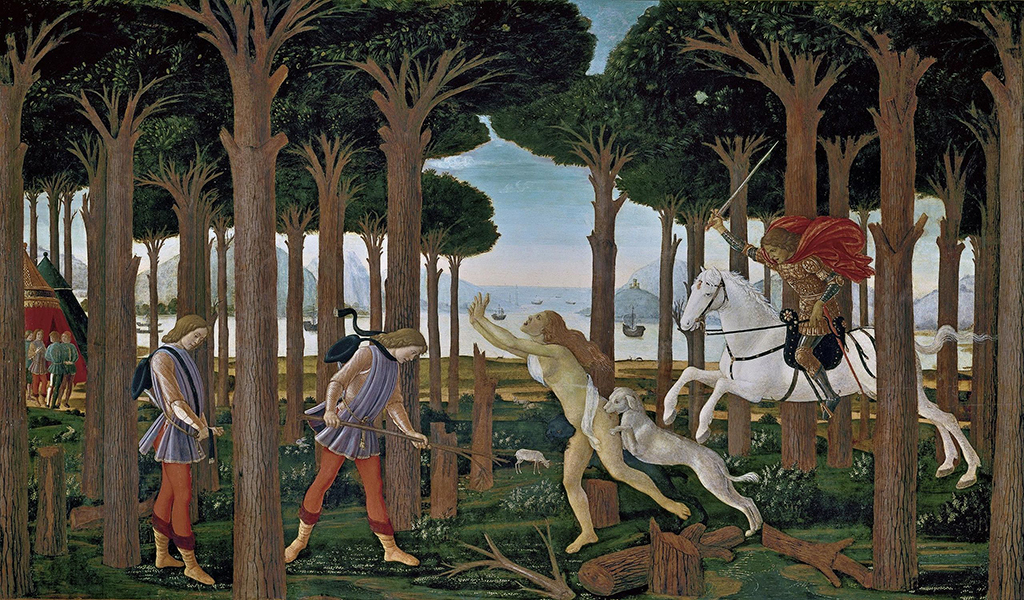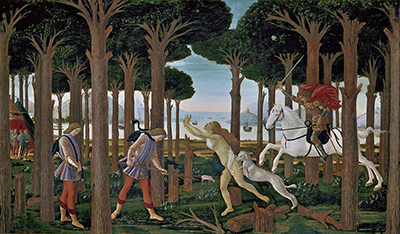Sandro Botticelli was tasked with producing four panels for Lorenzo the Magnificent in 1483, with each one covering a different episode from Giovanni Boccaccio's The Decameron. Nastagio degli Onesti features in four different scenes which have since been separated and are now displayed in different galleries.
The style of these artworks feels fairly traditional, with a compositional style which was more common prior to the Italian Renaissance. For example, most of the figures in each piece are placed horizontally in the foreground, without too much variation in size or position. The background is detailed but feels somewhat detached from the items in front. Compare that to, say, the work of the Bruegels in Northern Europe, where figures would be placed right across sprawling landscapes which felt far more three dimensional. Another good example of this more flattened approach would be from the career of Paolo Uccello, who gave us the likes of The Hunt in the Forest, though he showed in other paintings that he was more than capable of producing less linear landscape scenes. It is important to remember that whilst the Italian Renaissance pushed things on from the Middle Ages, it was not quite as abrupt a change as some believe, and that some patrons may have still requested more traditional styles for their own projects.
The panel in front of us here was titled Nastagio Meets the Woman and the Knight in the Pine Forest of Ravenna. We see the knight on horseback, and Botticelli afforded him some considerable detail on his protective clothing and the cape which flies into the air as he arrives with his sword lifted into the air. The woman looks desperate, with her clothes torn from her body and an aggressive dog biting her as she attempts to flee. Two male figures arrive, perhaps ready to help her. They are set within a forest scene, with tall trees decorating the vertical space. An open area is left in the centre of the panel which allos us to see through to the background, where boats travel across a tranquil sea. Further back are some green hills and a bright sky. Botticelli incorporates some touches of nature too, with flowers dotted around the foot of the trees. This panel can be found at the Prado Museum in Madrid, Spain. Others panels in this series included The Banquet in the Forest and Marriage of Nastagio degli Onesti.
One interesting aspect to the legacy of Botticelli is that for many years he was actually somewhat forgotten by historians until returning to prominence as recently as the 19th century. It was the Pre-Raphaelite movement, which included the likes of Morris, Millais and Burne-Jones who encouraged a re-appraisal of the artist and from that point onwards he has been viewed far more favourably both in Italy and also abroad. This fluctuation in fortunes has happened to a number of artists over the years, though perhaps Botticelli is the most famous of all to have suffered the same treatment. You will not see the same with the likes of Da Vinci, Michelangelo and Raphael for example, with interest in their achievements having remained fairly constant throughout the many centuries that have passed since the Renaissance came and went.





